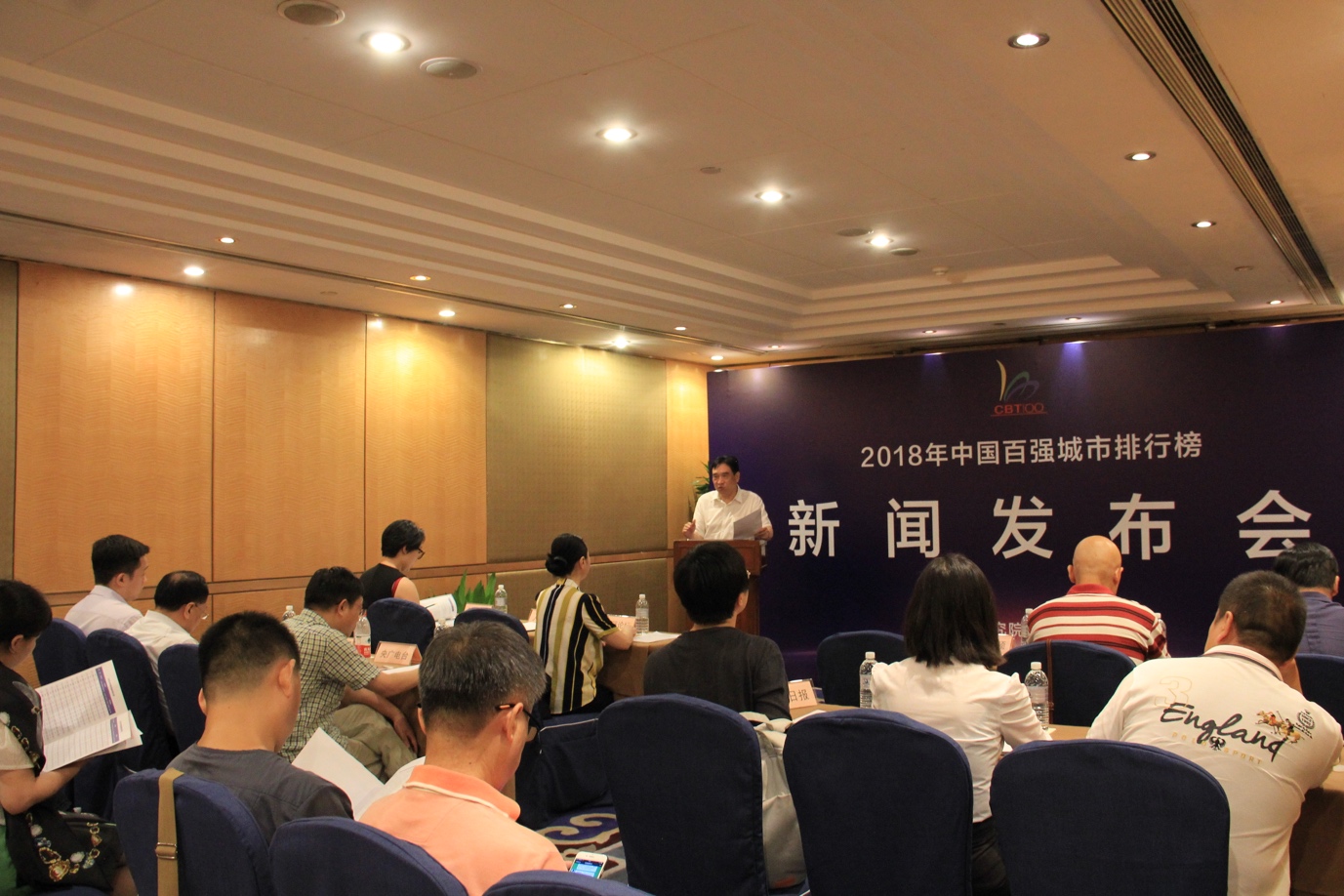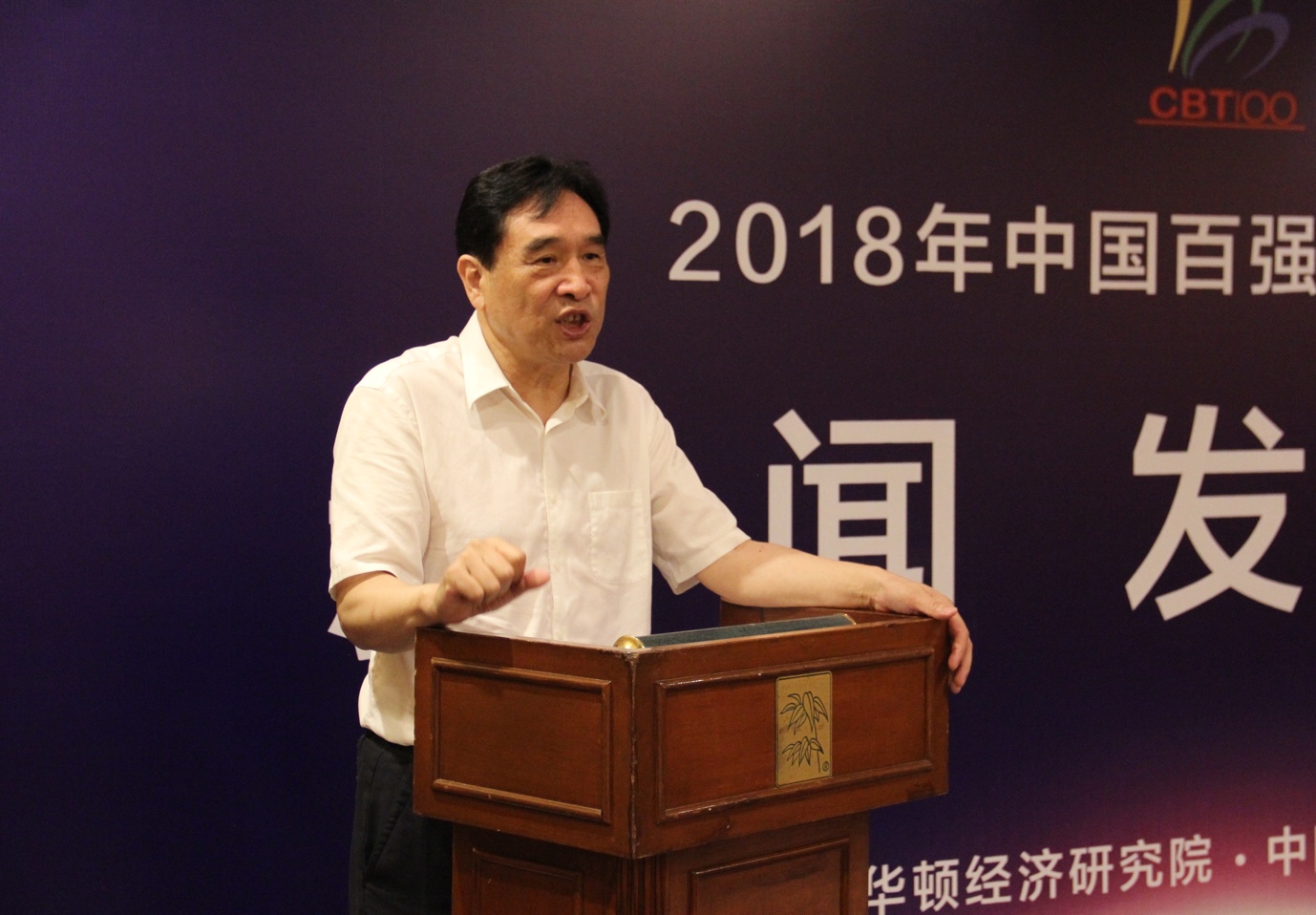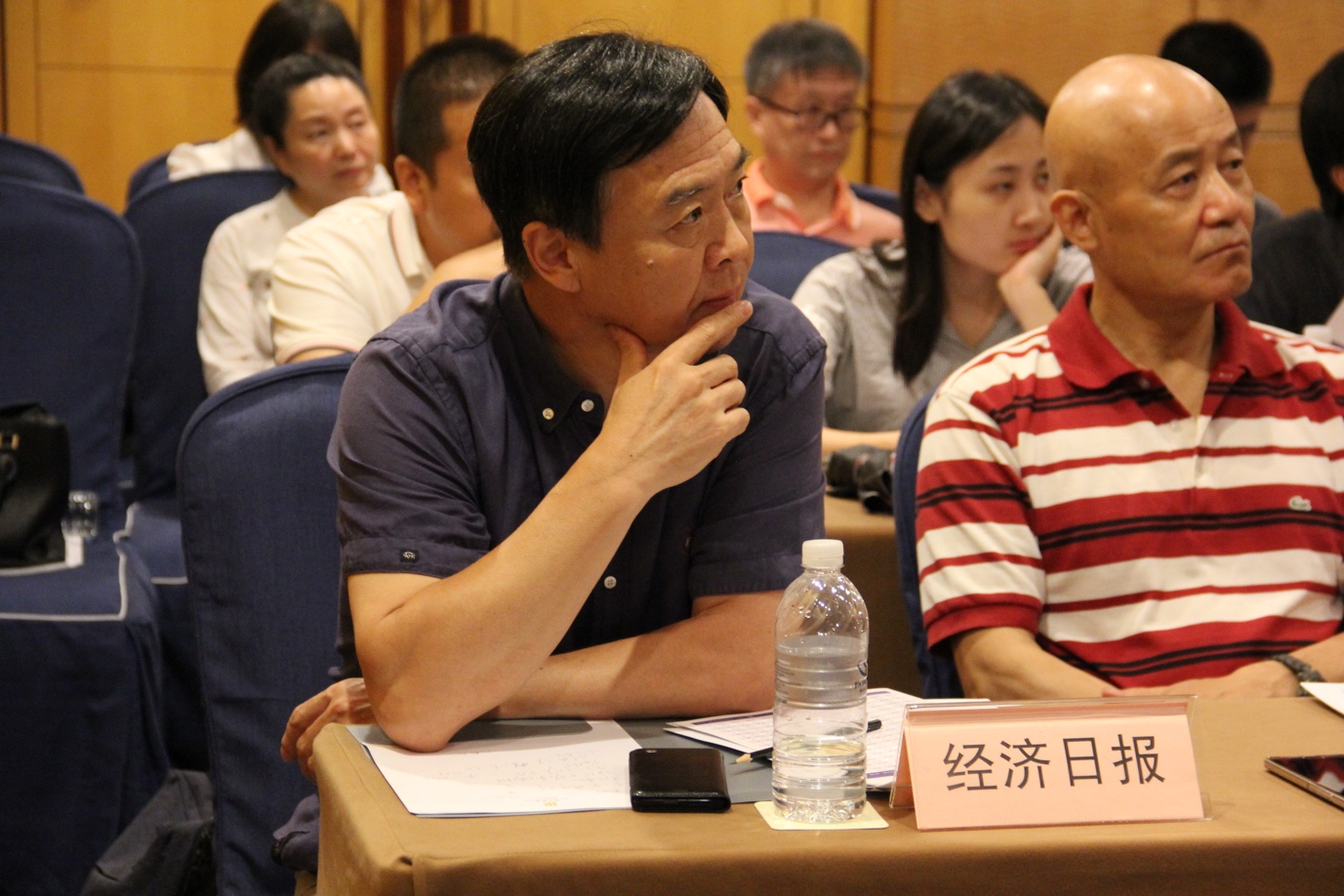2018 CBT100 Cities List Released in Shanghai
On 20th July 2018, the Warton Economic Institute (WEI) held a press conference to release the 2018 CBT100 Cities List. Mr. Shen Hanyao, President of the WEI and Executive Chairman of China Business Top 100 (CBT100) Forum, officially released the List to the public. The press conference drew extensive media attention, with journalists from the People’s Daily, Xinhua News Agency, CCTV, the Economy Daily, as well as many other media agencies making their attendances.
 Press conference 2018 marks the fourth time for the publication of the CBT 100 Cities List by the WEI. Beijing tops the List with a total score of 93.74, while Shanghai (88.23) and Guangzhou (83.40) rank the 2nd and the 3rd, respectively. Cities that are ranked 4th-10th (Shenzhen, Hangzhou, Chengdu, Suzhou, Tianjin, Wuhan, and Chongqing) all achieve a total score of above 70, and Nanjing ranks the 11th with a total score of 67.45. The top 10 cities have remained the same for four consecutive years, but their relative rankings adjust slightly. For example, Hangzhou rises to the 5th place (7th in 2017), Suzhou rises to the 7th place (8th in 2017), Wuhan rises to the 9th place (10th in 2017), while Tianjin drops to the 8th (5th in 2017). The new city that makes the List this year, Ganzhou, is ranked the 88th on the List.
Press conference 2018 marks the fourth time for the publication of the CBT 100 Cities List by the WEI. Beijing tops the List with a total score of 93.74, while Shanghai (88.23) and Guangzhou (83.40) rank the 2nd and the 3rd, respectively. Cities that are ranked 4th-10th (Shenzhen, Hangzhou, Chengdu, Suzhou, Tianjin, Wuhan, and Chongqing) all achieve a total score of above 70, and Nanjing ranks the 11th with a total score of 67.45. The top 10 cities have remained the same for four consecutive years, but their relative rankings adjust slightly. For example, Hangzhou rises to the 5th place (7th in 2017), Suzhou rises to the 7th place (8th in 2017), Wuhan rises to the 9th place (10th in 2017), while Tianjin drops to the 8th (5th in 2017). The new city that makes the List this year, Ganzhou, is ranked the 88th on the List.
 President Shen Hanyao interpreting the newly released CBT100 Cities List
President Shen Hanyao interpreting the newly released CBT100 Cities List
In the press conference, Mr. Shen Hanyao talked about key information as suggested by the List.
1. China’s economic activities have been more concentrated in major cities. Therefore, the status of CBT100 cities has been strengthened. In 2017, aggregate GDP of CBT100 cities accounted for 75.22 per cent of China’s national GDP, increasing by 3.22 (5.00) per cent compared with that in 2016 (2015). It is evident that the CBT100 cities are the pivotal engines and main bases for China to achieve sustainable economic growth of high-quality.
2. The four “star” provinces – Jiangsu, Zhejiang, Guangdong, and Shandong – remain the highlights of the 2018 List. All 13 cities in Jiangsu Province make the list, among which 9 cities improve their individual rankings. For example, the ranking of Taizhou rises from the 61st to the 55th (the largest increase). In Zhejiang Province, a total of 8 cities make the list, among which 6 cities improve their individual rankings. For example, the ranking of Shaoxing rises from the 38th to the 34th (the largest increase). Shandong remains as the province with the highest number of cities that make the List. Among the 15 cities in Shandong Province that are on the List, the rankings of 4 cities increase and those of 3 cities remain unchanged.
3. Geographical dispersion. The total number of CBT100 cities decrease from Eastern China, Central China, to Western China. Out of the 100 cities, 61 cities are located in Eastern China, 24 in Central China, and 15 in Western China. Meanwhile, the majority of CBT100 cities are located in the three China Economic Circles. The three China Economic Circles collectively host 42 cities – with 8 in the Beijing-Tianjin-Hubei Economic Circle, 24 in the Yangtze River Delta Economic Circle, and 10 in the Pearl River Delta Economic Circle.
4. Industrial structure. In general, the rankings of cities that feature traditional industries decrease, while the rankings of cities that feature strategic and emerging industries increase. For example, the rankings of 5 out of 6 cities in Northeast China that make the 2018 List drop. In comparison, the rankings of cities such as Hangzhou, Suzhou, Wuahn, Wuxi, Shaoxing, and Changzhou all increase, suggesting that in the future, CBT100 cities need to closely follow the frontier and trend of global economic development, in order to achieve economic development.
Mr. Shen Hanyao also commented on the Sino-US trade war, which has recently received global attention. The WEI President pointed out that, currently, under the external settings of economic uncertainty and the resurgence of trade protectionism, China should proactively search for new sources of economic growth and revitalise national economy by increasing domestic demand. Meanwhile, CBT100 cities are the driving forces for China’s economic development. The total retail sales of consumer goods in these cities accounted for 70.83 per cent of national retail sales in 2017. Therefore, CBT100 cities need to shoulder more responsibility to increase domestic demand and competitiveness, so that China’s economy can be in a better position to deal with external challenges.
 Media Q&A
Media Q&A
The press conference also released five individual lists in terms of household savings, fiscal income, consumption, wage level, and fixed capital investment.
Top 10 cities with the highest household savings: Beijing, Shanghai, Guangzhou, Chongqing, Chengdu, Shenzhen, Tianjin, Hangzhou, Suzhou, and Xi’an.
Top 10 cities with the highest fiscal income: Shanghai, Beijing, Shenzhen, Tianjin, Chongqing, Suzhou, Hangzhou, Guangzhou, Wuhan, and Chengdu.
Top 10 cities with the highest consumption: Beijing, Shanghai, Guangzhou, Chongqing, Chengdu, Tianjin, Wuhan, Shenzhen, Hangzhou, and Nanjing.
Top 10 cities with the highest wage level: Beijing, Shanghai, Shenzhen, Guangzhou, Chongqing, Tianjin, Hangzhou, Suzhou, Chengdu, and Nanjing.
Top 10 cities with the highest fixed capital investment: Chongqing, Tianjin, Chengdu, Beijing, Qingdao, Wuhan, Zhengzhou, Shanghai, Changsha, and Hefei.
Out of the CBT100 cities, Beijing can be considered the richest from the perspective of savings. In 2017, total savings and per capita savings reached RMB2,800bn and RMB129,000, respectively. In terms of the wage level, Beijing and Shanghai top the list and their average annual wages were both above RMB120,000 (RMB123,500 in Beijing and RMB120,500 in Shanghai). Average annual wages in Tianjin (RMB96,600) and Nanjing (RMB90,200) both rose to over RMB90,000, surpassing Shenzhen (RMB89,800), Ningbo (RMB88,400), and Hangzhou (RMB87,200).
In the end, President Shen Hanyao introduced the 4th CBT100 City Forum, which is to be held in November, along with the 18th CBT100 Company Forum. This year will be the fourth time when these two forums are held together, with an aim to enhance co-operation between CBT100 cities and CBT100 companies. The 4th CBT100 City Forum is to feature collaborative development across cities and the “Beautiful City Action”, with emphases on ecologicalisation, intellectualisation, scientific research and high-tech industries. The continual growth and development of CBT100 cities will ultimately contribute to the revitalisation of the Chinese economy.
